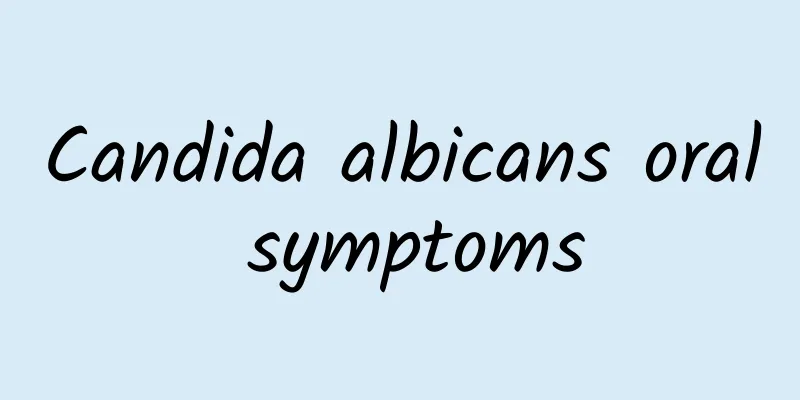Candida albicans oral symptoms

|
Oral Candida albicans is also known as oral candidiasis, which is mainly an oral disease caused by Candida infection. Candida is distributed in the human mouth, vagina, and digestive tract, but generally does not cause disease. Only under certain conditions will Candida cause infection and lead to disease. Oral diseases are generally very harmful, so the oral symptoms of Candida albicans have become a focus of patients' attention. Oral candidiasis is an oral mucosal disease caused by fungus infection -- Candida spp. In recent years, due to the widespread clinical use of antibiotics and immunosuppressants, dysbacteriosis or reduced immunity has occurred, resulting in an increasing number of people with fungal infections of the internal organs, skin, and mucous membranes, and the incidence of oral mucosal candidiasis has also increased accordingly. Gruby (1842) isolated yeast-like fungi from the lesions of patients with oral ulcers, and Berkhont (1923) confirmed that this fungus belonged to the Cryptococcal family, including Candida albicans, Candida solani, and Candida pseudotropicalis. Among them, Candida albicans is the most important pathogen. Oral thrush is the most common oral candidiasis. The most reliable laboratory diagnostic method for candidiasis is currently the formation of thick-walled spores on corn culture medium, while the simplest method is direct microscopic examination of specimens. Dentists often take specimens of pseudomembranes, desquamated epithelium, scabs, etc. of the oral mucosa, place them on a slide, add a few drops of 10% potassium hydroxide solution, cover with a cover slip, heat over a low flame to dissolve the keratin, and then immediately perform a microscopic examination. If pseudohyphae or spores are found, it can be confirmed as a fungal infection, but it must be cultured to be confirmed as Candida albicans. Acute pseudomembranous Candidal stomatitis should be differentiated from acute coccal stomatitis (membranous stomatitis). Membranous stomatitis is caused by infection with cocci such as Staphylococcus aureus, hemolytic Streptococcus, and Pneumococcus. It is common in children and the elderly and can occur in any part of the oral mucosa. The affected area is obviously congested and edematous, and a large amount of fibrinogen exudes from the blood vessels, coagulating into a grayish white or grayish yellow pseudomembrane with a smooth and dense surface that is slightly higher than the mucosal surface. The pseudomembrane can be easily wiped off, leaving behind an eroded surface with bleeding. Regional lymphadenopathy may be accompanied by systemic reactions. Smear examination or bacterial culture can identify the main pathogens. The differential diagnosis should be differentiated from acute coccal stomatitis (membranous stomatitis). Membranous stomatitis is caused by Staphylococcus aureus. Hemolytic Streptococcus. Caused by coccal infection such as Pneumococcus. Children and the elderly are more susceptible. It can occur in any part of the oral mucosa. The affected area is obviously congested and edematous. A large amount of fibrinogen leaks out from the blood vessels. It condenses into a grayish white or grayish yellow pseudomembrane. The surface is smooth and dense. Slightly above the mucosal surface. The pseudomembrane can be easily wiped off. There is erosion and bleeding left behind. Regional lymphadenopathy. May be accompanied by systemic reactions. Smear examination or bacterial culture can identify the main pathogens. Relief methods: 1. Avoid cross infection in the delivery room. During delivery, pay attention to the disinfection of the perineum, birth canal, the hands of the midwife and all delivery equipment. 2. Wipe the baby's mouth frequently with warm water, boil and disinfect feeding utensils, and keep them dry. Before breastfeeding, it is best to clean the mother's nipples with 1/5000 chlorhexidine hydrochloride solution and then wipe them clean with cold boiled water. 3. Children should protect their lips from dryness and cracking in winter, and correct the bad habit of licking their lips and sucking their tongues. 4. Patients who use antibiotics and immunosuppressants for a long time, or patients with chronic wasting diseases, should be alert to the occurrence of Candida albicans infection, especially the occurrence of deep (visceral) Candida albicans complications that are easily overlooked. |
<<: Is Chinese toon an allergy-inducing food?
>>: Why does the baby have a fever in the upper body?
Recommend
Is gastric bleeding and vomiting blood serious?
Gastric bleeding itself is a relatively serious d...
Is COPD serious?
Although patients with milder cases of COPD will ...
What to do if you have heartburn from eating chili peppers?
Chili pepper is a common food in our diet. There ...
Rash and itching after moxibustion
Moxibustion is a relatively common treatment meth...
How can we keep our spleen and stomach healthy and get sick less often?
As we all know, if we are not feeling well, our l...
TCM treatment of cholecystitis
In fact, it is better to treat cholecystitis thro...
Causes of drooling
What is the reason for drooling? This is also a v...
The harm of eating chili peppers frequently
Chili pepper is the most common stimulating ingre...
Can PD factor really remove red blood streaks?
PD factor is the abbreviation of PDCD. Its full n...
How many courses of treatment are needed for bacterial vaginitis
When suffering from bacterial vaginitis, women sh...
Real natural amber pictures
Amber is a fossil of coniferous tree resin millio...
Effects of Snow Lotus
Our modern health science emphasizes diet therapy...
Why does my waist hurt when I lie down?
Some people will experience symptoms of back pain...
What is good to make soup with Astragalus?
Soup is an indispensable food in our daily life. ...
Can I drink Coke if I have a cold?
Coke is a common beverage in our lives and it can...









